Light on new cars, Detroit show features trucks
Filed under: Equinox, Features, Autos
By John Gilbert
DETROIT, Michigan
Call it “Auto Show Light,” but the North American International Auto Show, formerly known simply as the Detroit Auto Show, seems to have gone on a diet, as the latest example of how the automotive world is changing. Swamped by the consumer tide of sports-utility vehicles rising above and beyond mere cars, much in the way the nation’s most prestigious auto show has added words in hopes of adding prestige to its name.
While spectacular new cars were fewer, there certainly were still some compelling introductions during the annual press previews on Monday and Tuesday, January 15-16, with the public show following through the following two weekends. But trucks had the upper hand.
Ram rolled out an impressive new 1500 pickup truck, with the massive, macho facade replaced by a far more refined grille and completely redone interior, with a giant vertical navigation/information screen about the size of a full-size iPad.
The new rounded-off look is a departure, and it was interesting that the new Ram won “Best in Show” from the respected auto website cars.com, and perhaps it was verification of how few new cars there were, since the Los Angeles Show in November, that pickups won several awards.
Ford offered a hybrid version of its new F150 pickup and made big news affirming the much-rumored return of the midsize Ranger pickup, which not only was a highlight of the show, but was a co-dominating model alongside a couple of new Mustang versions.
Honda’s Acura luxury division called it a concept, but the new generation of the RDX compact SUV made a strong impression, as trucks and trucklings dominated. Also, there were a number of concept vehicles — including one each from Nissan and its upscale Infiniti brand — and Toyota’s Lexus also showed a concept sporty SUV. Read more
Always-safe Volvos add style, technology for 2018
Filed under: Equinox, Features, Autos
By John Gilbert
DENVER, COLO.
As members of the car-buying public, we’ve spent our lifetimes compromising when it comes to car-buying. We might want something sporty, great looking, and quick, but we also have families who require that our first choice becomes solid, roomy and safe. We’ve also watched as most companies tried to make their cars as attractive as possible, then added stuff on in hopes of making them safer.
Because of all that, and what we’ve observed, and the small portions that we’ve learned, you’ve got to hand it to Volvo, which seems to have gotten to the sweet spot in the compromise by sticking to safety and letting stuff like luxury, attractiveness and performance come along at its own, leisurely pace. From my vantage point, it appears Volvo has found the hot button. My favorite, for now, is the new 2018 QX60, a compact, midsize SUV that does everything I could ever want in a vehicle.
The 2018 array of models coming out with Volvo’s vehicles, with their slashed bar over the grille and “Thor’s Hammer” headlight design, come as close as it gets to being all things to all people. For a price, of course. Such quality and built-in safety and technology don’t come cheap. The S90 runs from $49,195 in base T5 Momentum form up to nearly $70,000 in loaded T8 all-wheel-drive top trim. The V90 ranges from $50,000 to $53,000 coming only with front-wheel drive. And the XC60 starts at $42,495 for the Momentum, $45,900 for the R-Design, and $46,300 for the Inscription, and all XC60s come with all-wheel drive.
Once a Swedish company that made rock-solid safe cars, then a Ford affiliate that made safer cars for different reasons, and now a Swedish company owned by a Chinese conglomerate that is making cars that fulfill every angle of every car compromise, Volvo has kept its eye on its own, stubborn target. Under the financial umbrella of Geely, Volvo is still headquartered in Gothenberg, Sweden, but it now makes some vehicles in China — where it is sure to be a huge seller — and is also building a state-of-the-art factory in the U.S. Read more
Potent Trackhawk becomes ultimate Jeep
Filed under: Equinox, Autos
By John Gilbert
Maybe it’s time for the auto industry come up with a new and different name for such superlatives as “mind-blowing.” If you look over the vehicles from Dodge and its amazing SRT — Sport and Racing Technology — operation, you can review the assortment of available mind-blowing powertrains that can be obtained in such sporty vehicles as the Charger sedan and Challenger sports coupe.
Starting with the quite impressive 3.6-liter V6 with 305 horsepower, you can move up to the 5.7-liter Hemi V8 with 372 horsepower/400 foot-pounds of torque, to the 485 horse, 475 torque figures of the 6.4-liter Hemi, and then you can go onward and upward to the Hellcat’s 6.2-liter supercharged V8 and its 707 horse, 650 foot-poiund Hemi. Dizzying as that array might be, up on top there is the limited-edition Challenger Demon, with an even more potent version of the 6.2, with 808 to 840 horsepower and up to 770 foot-pounds.
Mind-blowing, to say the least.
But now we do have a new term to gather such superlatives, staying within the FCA (Fiat Chrysler Auto) family: “Trackhawk.”
The 2018 Jeep Grand Cherokee Trackhawk, to be exact.
We are accustomed to the most rugged Jeep models earning the designation “Trailhawk,” for capability over and above the garden-variety Jeeps whenever you venture off-road, but the Trackhawk is for when you stay on the road and want to have the strongest, fastest, most powerful SUV ever constructed — or even imagined.
Basically, the SRT guys, who performed such amazing engineering feats on the Hemi V8s for the Hellcats and Demons, took the 6.2-liter Hellcat Hemi V8 and performed even more magic tricks to turn the Grand Cherokee into the Trackhawk. When finished, the Trackhawk is a no-compromise street-road-track and, yes, off-road and foul-weather SUV weighs in at 5,500 pounds. Read more
New elongated Tiguan springs from VW for 2018
Filed under: Equinox, Autos
DENVER, Colorado
Just west of Denver, the Rocky Mountains rise from the Mile High City’s 5,280 feet to peaks jutting more than 10,000 feet into the sky. They can be traversed by twisting roads up to and along the Continental Divide, but you do it with care, and you’d best have a vehicle that handles with great precision.
What better place for Volkswagen to introduce its new 2018 Tiguan? After all, a Tiger, or an Iguana, could make that climb with ease, and legend has it that back in the days when VW assigned real-world elements to its vehicles — Golf for gulf wind, Jetta for jetstream, Scirocco for desert wind, etc. — somebody decided that the first stubby and squarish sport-utility vehicle might best be named by combining the stealth of the tiger and the lizard-like maneuverability of the iguana.
Far as we could tell, there were no tigers, nor iguanas, out cavorting in the 98-degree heat during our wave of the global launch of the all-new Tiguan. But that’s OK; the new Tiguan handled every road-challenging turn and switchback with great poise and delivered impressive power and fuel economy both on the way up and coming back down to our base at the Halcyon Hotel in suburban Cherry Creek.
My driving partner was a fellow we’ll call Wayne, an incurable devotee to fuel efficiency. He slows down a block away when he sees a street light turn red ahead, so that he can avoid gas-robbing stop-and-goes, where moderate speed can allow him to continue forward. He also doesn’t exceed the speed limits on suburban steets, causing others in our group to line up behind us in frustration.
But when we partner, I find myself driving more rationally, and trying to also maximize fuel efficiency even while using more burst of power to exercise a vehicle’s handling capabilities. We both like to stop and shoot photos at scenic spots. So this was a good match.
The night before our drive, we gathered at the hotel’s penthouse suite for a buffet dinner that was outstanding. It was there we heard some other journalists who had just finished the previous wave grumbling about the Tiguan’s lack of power and boring ride characteristics. We were not anticipating anything outstanding, but the Tiguan delivered exactly that in surprising quantities.
I never disliked the original Tiguan, stubby and square though it is, it just seemed to lack the style brought about by the new explosion of compact crossover SUVs.
After all these years, this will be the first renovation of the Tiguan, and the old Tiguan will continue to be built for the near future as the Tiguan Limited. Every company making SUVs are now caught up in the craze to make smaller and more compact models, and here is Volkswagen, already with a reasonable compact, choosing to build a larger one.
The new one is 10.7 inches longer and it fits on VW’s excellent new MQB platform, a modular chassis that can house every car and SUV with a transverse engine design. The side-mounted engine at the front of the new Tiguan is the familiar 2.0-liter turbocharged 4-cylinder, except it is entirely new. VW’s engineers are always creating new concepts in engine building. They have made a 2.0 for decades and it has served the company well in all manner from efficient to the screaming powerplant of the GTI. More recently, VW added a 1.8-liter engine that was a downsized derivative of the 2.0.
And one year ago, VW came out with a superb new 1.4-liter turbo that is the first of an entirely new high-tech family of engines. So when I learned the Tiguan would have a 2.0, I had to ask Mark Gillies if this one was an enlarged version of the 1.4 or a redone version of the old 2.0.
“It actually is a revised version of the EA 888 — the old 2.0,” said Gilles, senior manager of production and technology for Volkswagen of America. “It is called the ‘Butack’ engine, named after the engineer who designed it with a revised Miller-cycle system that closes the intake valves early, increasing combustion time, and allos the variable cams to open longer and wider when you need more power.”
There is another example of VW engineering genius. With new engines seeming to aim at replacing old ones, VW keeps the old ones around back in the laboratory where an engineer named Butack might find the time to extract a whole new future for it. Read more
Versatile Elantras even challenge Sonata
Filed under: Equinox, Autos
By John Gilbert
LA JOLLA, CALIF.
Hyundai has never gotten the acclaim it deserves for shattering convention in the placid realm of midsize autos, forcing all competitors to revise their concepts as well as their cars and powertrains. It was in 2010 that Hyundai brought out the 2011 Sonata, as its conveyance to elite status in the auto world
It had dramatic new styling, with contours covering both sides and a sleek shape overall; a new 2.4-liter engine with an expensive and efficient direct-injection system that could attain 40 miles per gallon at freeway speeds; a body that, while shapely, was amazingly strong because of the predominance of high-strength steel; new house-built 6-speed stick and automatic transmissions; and all in a less-expensive package than more dominant midsize Accord, Camry, Mazda6, Altima, Malibu and Fusion.
That car thrust Hyundai into a previously unattained status in the car business, and forced competitors to shake out of their complacent lethargy and realize there were better ways to build cars and engines. Several updates and revisions have followed, raising the segment dwellers substantially for their 2017 models, with more to come in 2018.
While all of the midsize competitors have improved greatly in recent years, the smaller compact cars also have grown up and now boast remarkable improvements
At Hyundai, that means the last compact Elantra that came out, in 2015, has moved up in station to challenge the larger midsize stalwarts.
With that, we drop in out of the friendly skies to visit Torrey Pines Resort in La Jolla, California, .a suburb of San Diego that also includes a world-class golf course, along the Pacific coastline. It is a wonderful resort, and it is not far down the Coast from Hyundai’s U.S. base offices. That made it convenient as the site for waves of automotive media to experience the first drives of both the 201 Sonata, and the 2018 Elantra Sport and GT.
Hyundai gave the Sonata the leadoff slot as the flagship of the company’s identity in the U.S. market, and we had to wait until the next day to examine and drive the Elantra Sport and GT. That was intriguing, because the Sonata, looking more luxurious than ever and with refined driving capabilities, is really a well-crafted mid-cycle update, with stylish new front and rear designs, while the Elantra Sport and GT are entirely new.
We can introduce both of them together, but add the caution that you may be lured into the Hyundai dealership by the roomy and stylish Sonata, but do not overlook the equally flashy and conveniently sized Elantra, Elantra Sport, and Elantra GT.
My preference always has favored midsize cars, but as midsize cars grow in size to now approach full-size vehicles in roominess and luxury, the compacts have slyly grown too, and now are pretty much the size you may prefer in your quest for a midsize car.
The Elantra came out early in this calendar year, and the Elantra Eco, with a new-generation 1.4-liter turbocharged engine, followed in April. The Elantra GT comes next, available about November, and it will be the prize of the litter for folks who appreciate sporty driving and vehicles that respond well to sporty input. At a base price of $21,650, the Elantra Sport is a strong value for bargain shoppers still craving some fun in their driving
Any question of the Elantra GT’s credentials are eliminated by realizing it began life as the i30 in Europe, a sporty hatchback that likes to take on the Golf GTI and the hottest Ford Focus ST — with a sizzling turbo 2.0 that produces either 247 or 271 horsepower, both with 260 foot-pounds of torque. The best way to get the Elantra GT is the GT Sport package, which takes a large step up from the everyday Elantra GT. The U.S. version of the Elantra GT has the 2.0 engine without the turbocharger and with 162 horsepower at 6,200 RPMs, and 150 foot-pounds of torque at 4,700. It comes with either a 6-speed stick or 6-speed automatic.
The GT Sport parlays the 1.6-liter turbo 4 — my favorite — with a standard 6-speed stick or a 7-speed dual-clutch transmission and paddles. That package has 201 horses at 6,000 revs, and 195 foot-pounds of torque from 1,500-4,500 RPMs. The GT Sport also has multilink rear suspension and 18-inch wheels, compared to the torsion beam rear suspension and 17s in the Elantra GT.
Strangely, there are some items available on the GT Sport that are unavailable on the Elantra GT, such as blind-spot detection with rear cross-traffic, lane change assist, lane keep assist, smart cruise control, automatic emergency braking with pedestrian detection, and high beam assistance. Both vehicles have stability control, traction control, hill-start assist brake assist and rearview camera.
More curiously, while the Sonata has discontinued the very impressive panoramic sunroof for 2018, but the Elantra GT and Sport will offer it. The Sport has more bolstered bucket seats up front. The cars are built using 53 percent high-strength steel, leading to an 18 percent increase in the GT’s torsional rigidity, and the GT Sport is 22 percent more rigid and 61 pounds lighter than the previous model, with under-car cladding to improve aerodynamics to a 0.30 cd.
Driving on a hot day in the California mountains, we appreciated finding ventilated front buckets with cool air coursing through the seats. And the Infinity audio system has seven speakers and a subwoofer with plenty of power.
Along with all the contemporary connectivity devices and outlets, the remote start can be programmed into your smartphone, which can also turn on your rear defroster on cold mornings. The smart cruise has full stop-start, and there’s a driver attention assist as well.
We drove pretty hard and appreciated the precise feedback and curve-tracking capability of the Elantra GT and Sport GT, which put its quick-revving 1.6 turbo to good use. Hyundai estimates its previous 40-percent stick shift sales might be reduced to 20-40 percent, but that’s still high these days. The company also projects 15 percent of Elantra buyers will take the turbo, leaving 85 percent the rest of the line.
Statistically, the Elantra GT and Sport will have to take on a crowded compact field. The Elantra GT’s 55.1 cubic feet of interior storage will handle that well, compared to the Civic’s 46.2, Chevrolet Cruze 47.2, Mazda3 47.1, Focus 43.9 and Golf 52.7. One other interesting stat: We drove hard over the mountain roads and registered a surprising 41 miles per gallon
The Elantra is competitive enough that it might also challenge the larger and more profitable Sonata in overall room, as well as handling and performance. The lighter Elantra is 170.9 inches long compared to the Sonata 191.1; Elantra wheelbase is 104.3 inches to 110.4; width 70.7 to 73.4; and height 57.7 to the Sonata’s 58.1. That sounds like a big difference, but the Elantra Sport front and rear headroom is close to Sonata’s: legroom is 3 inches less front and 0.8 inches less in the rear, while shoulder room is also close, 56.2 inches front and 55.4 rear to the Sonata’s 57.9 front and 56.5 rear. The overall interior space is 121.4 in the Elantra to 122.4 in the Sonata.
Comparing designs of the 2018 Sonata and Elantra Sport makes it evident that the Sonata is intending to move upscale, and at that, it has the style, technology and roomy comfort to carry it off. The Elantra Sport, meanwhile, becomes a viable choice for a few thousand less, almost the same roominess, and the adventuresome look of the hatchback.
The larger midsize cars seem the most squeezed by the current rush to SUVs. New models of Accord and Camry have tried to catch the superb Mazda6 and jacked up the segment, and now into the midst of it all comes the seventh-generation Sonata, as a 2018 model.
When the 2011 Sonata breakthrough hit, it was very popular but drew criticism from skeptics who thought the curvaceous bodywork would be too trendy and might look old before its time. That was an erroneous theory, because while Hyundai scrambled to go back to more conservative designs in every revision, and it now looks quite generic — next to the still-distinctive 2011 Sonatas, which stand out as exclusive and readily recognizable.
For the 2018 refreshing, Hyundai hired Edward Lee, a young designer who had been working at Lexus. He said his task was a mission statement, “to create an instant ‘Wow!‘ factor.” Lee added that, “We aimed for a striking design starting with the side, where the shape starts low, from the tension of the nose.
“The front and rear have a new, upright athletic appearance. My favorite views are the front corner, where the contour lines come across the hood and angle down to the outer edges of our cascade grille, and a high view of the rear corner, which is much cleaner and emphasizes the car’s width and have a fresh, modern look, in what might be called horizontal elements in vertical arrangement. I like the way the lines, which connect the headlights and sweep back, all meet at the taillights.”
Lee confided that he, too, liked the look of the 2011 Sonata, and while he stopped short of saying he was attempting to reverse the trend, he acknowledged his first assignment for Hyundai was to make the Sonata more exciting.
John Shon, the senior product planning manager, talked about the signature cascade grille, which consists of horizontal bars aligned just right to amplify the hexagonal grille opening. With the broad horizontal top edge, then a short upper side bar, tapering down along longer lower side moldings to the bottom bar, the cascade term refers to the way molten steel flows out and downward. That, too, has meaning, because Hyundai is the only auto-maker that owns its own steel plant, which is why its cars are loaded with the costliest — and safest — high-strength steel.
My partner and I drove a Sonata Limited with the 2.4-liter 4-cylinder, and it handled the terrain and the curves of the mountain roads just east of La Jolla very well. After lunch in the mountain-area town of Julian, we switched to the Sport, with the 2.0-liter turbocharged engine. And proved conclusively that the quicker-revving engine, wider wheels and Michelin tires made a big improvement in handling and performance.
The range of Sonatas consists of the base SE 2.4 ($22,050 base price); the Eco 1.6-turbo ($22,650); the SEL 2.4 ($23,700); the SEL Tech 2.4 ($24,700); the Sport 2.4 ($25,200); the Limited 2.4 ($27,400); the Limited Ultimate 2.4 ($30,300); the Sport 2.0t ($27,600); and the Limited Sport 2.0t ($32,450).
The 2.4 is naturally aspirated with direct injection — the engine that put Hyundai on the international map as the joint venture still used by Fiat-Chrysler and Mitsubishi — and delivers a solid 185 horsepower at 6,000 RPMs and 178 foot-pounds of torque at 4,000 RPMs. The 2.0-turbo has 245 horsepower at 6,000 RPMs, and 260 foot-pounds at a steady flow from 1,350 to 4,000 RPMs. And the 1.6-liter turbo has 178 horsepower at 5,500 RPMs, and 195 foot-pounds from 1,500-4,500 RPMs.
The 2.4 comes with a 6-speed automatic, built by Hyundai, and the 2.0 turbo comes with the company’s upgraded 8-speed automatic, and both have Shiftronic to allow manual overrides. The 1.6-turbo has a higher-tech 7-speed dual-clutch automatic in the Eco, which will be out later this year. Hybrid and plug-in hybrid models will come out next year.
I liked the Sonata 2.0-Sport because it had paddles on the 8-speed automatic, and coming down from the mountains the paddles allowed me to drop down to fifth, fourth, or even third, and negotiate switchbacks without excessive braking. There was some excessive braking at one point, when a line of about 20 cars was stopped for a lengthy delay because of a rockslide that had come down from the bluff to our left and covered the two-lane highway. We didn’t mind pausing to let them clear that mess.
The Sonatas are built mostly at Hyundai’s Montgomery, Ala., plant, and at first, we assumed that was the more newsworthy. But the smaller Elantra was bigger news one day later, and unless I miss my guess, it will captivate you the same way in the showroom.


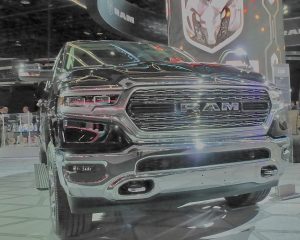
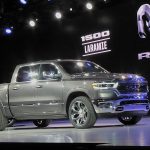
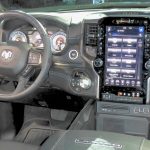
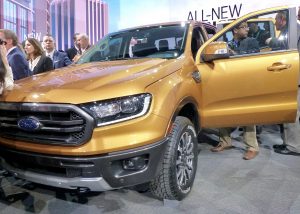
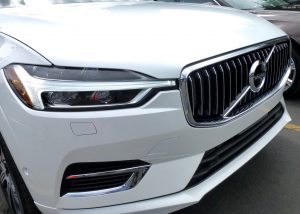
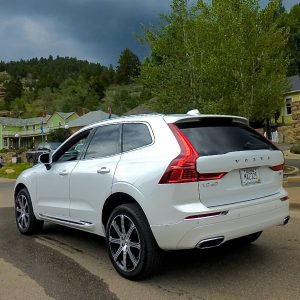
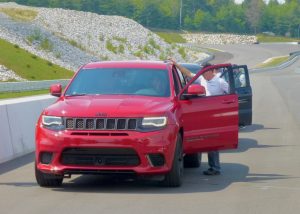
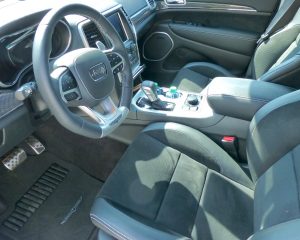
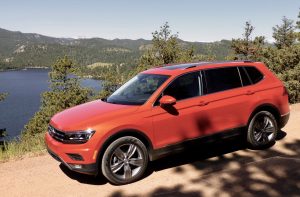
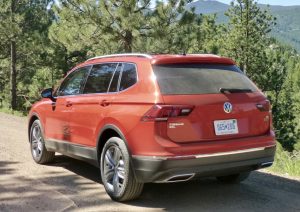
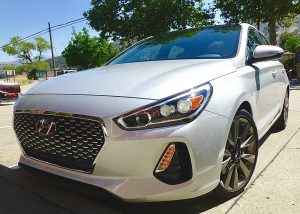
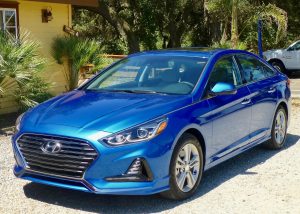
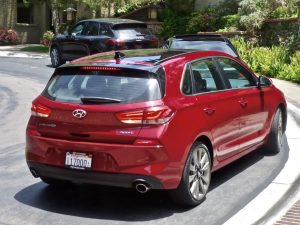
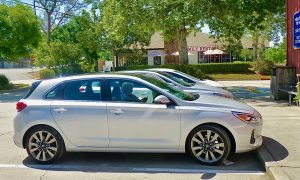

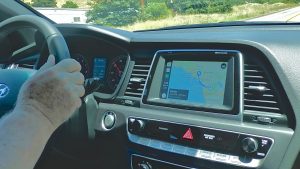
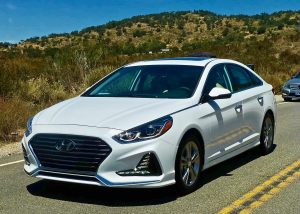
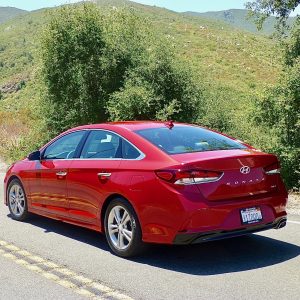
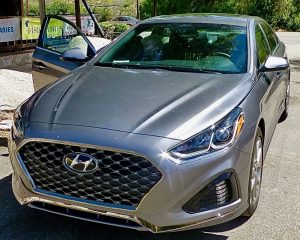
 John Gilbert is a lifetime Minnesotan and career journalist, specializing in cars and sports during and since spending 30 years at the Minneapolis Tribune, now the Star Tribune. More recently, he has continued translating the high-tech world of autos and sharing his passionate insights as a freelance writer/photographer/broadcaster. A member of the prestigious North American Car and Truck of the Year jury since 1993. John can be heard Monday-Friday from 9-11am on 610 KDAL(www.kdal610.com) on the "John Gilbert Show," and writes a column in the Duluth Reader.
John Gilbert is a lifetime Minnesotan and career journalist, specializing in cars and sports during and since spending 30 years at the Minneapolis Tribune, now the Star Tribune. More recently, he has continued translating the high-tech world of autos and sharing his passionate insights as a freelance writer/photographer/broadcaster. A member of the prestigious North American Car and Truck of the Year jury since 1993. John can be heard Monday-Friday from 9-11am on 610 KDAL(www.kdal610.com) on the "John Gilbert Show," and writes a column in the Duluth Reader.